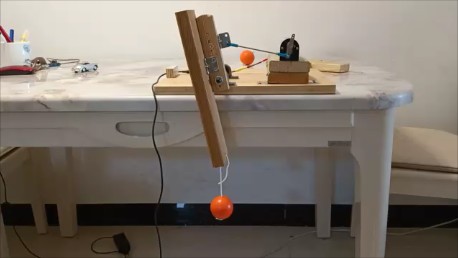Piddle-paddle Machine
Don't really have a build as the video shows how simple it is nature. Just a 12 volt geared motor powered by a variable 12 volt power supply; a wooden paddle mounted on an axle; connection from the motor via lever arm to the paddle to oscillate it back and forth.
I have no idea of the physics involved but it works much like a punching speed bag. Surprisingly I could find no physics explanation of how a speed bag works. So if anyone can contribute, that would be interesting. I know it uses a combination of a pendulum, centrifugal force, ball deformation and expansion and who knows what all.
The hand toy is quite fun to play with and is slowly improving my sense of timing and rhythm. Oscillating toys are so interesting.
Sorry about the squeakiness. No WD-40 available.
Here I have bolted on a second paddle. They eventually get out of sync - possibly due to slightly different string lengths. I thought they would resonate and stay in sync.
Update 7/17: In the second video I used a different kind of string than with the other ball. So I changed the second one out to be of the same as the first and low and behold they stay in sync. Huh. Maybe stretchy nylon string is a requirement to absorb some of the timing issues with motors that do not run at a perfect rpm. So I plan on doing a another little experiment: I want one ball on the bottom and one on the top and see how that works. Then I have run out of any other ideas.
Alright, this is probably the final video in this iteration since I don't know what else to investigate. In this video there is a ball on top and one on the bottom. I surmise the bottom one can run with lower rpm because it relies more on gravity than centrifugal force while the top one needs more centrifugal force than gravity. I am guessing the top one uses 90% centrifugal force and 10% gravity, while the bottom uses 40% centrifugal force and 60% gravity. Those figures are pure guesses as I am math/physics inept. Would love for someone to show the math for those figures.


